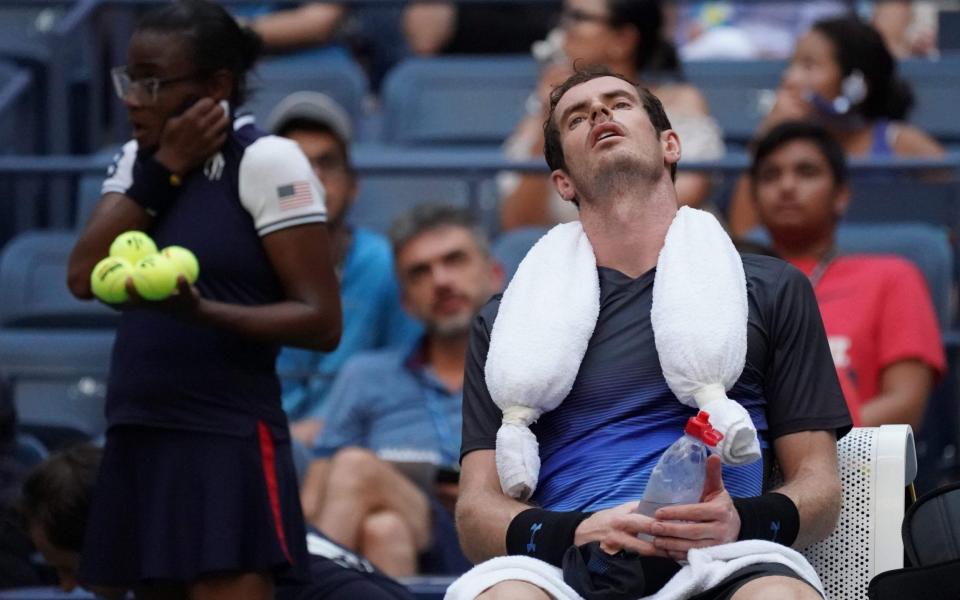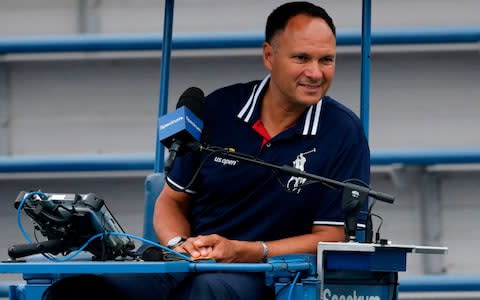Why the USTA's attempts to rewrite the tennis rulebook at the US Open have backfired

When the US Open began on Monday, the USTA no doubt anticipated the rules taking centre stage somewhat because of their decision to introduce 25-second service shot clocks at a grand slam for the first time.
What they probably did not anticipate was the shot clocks passing through the first week of the tournament relatively unnoticed because of a multitude of other code violation controversies, the result of the extreme heat rule they (rightly) introduced and a string of umpiring mishaps.
Their pioneering approach to policing time-wasting had attracted both praise and criticism from players and commentators alike in the build-up, but the past five days have shown that one thing is introducing a rule, and the other is actually managing it - and the USTA have blundered their way through on the second count.
It began with the USTA extending the extreme heat rule to the men's matches for the first time in their history on Tuesday (the women already had it in play), as temperatures soared to the mid-30s with players using ice towels to cool off and some even abandoning matches because of the heat. The rule, which allows players to have a 10-minute break at the end of the second set for the women and third set for the men, attracted headlines during Alize Cornet's opening match.
Cornet( info - @nicklester , @BenRothenberg,@ymanojkumar)(��Eurosport) pic.twitter.com/RlfQT3t77a
— doublefault28 (@doublefault28) August 28, 2018
The Frenchwoman made a quick on-court wardrobe change following the 10-minute break, after realising she had put her top on backwards. But apparently the image of the Frenchwoman in her sports bra behind the service line warranted an unsportsmanlike conduct code violation from the chair umpire.
The decision sparked social media backlash citing sexism (as the men often change shirts from their chair between sets - and if you're Rafael Nadal as many times as sweat deems necessary), and prompted the USTA to later revoke the charge on Cornet and apologise with their tail between their legs. But the damage was done, and the incident all the worse for the fact the umpire who dished out the violation was chosen by the USTA.
US Open Statement on Change of Attire Policy pic.twitter.com/Kt7EcuPz1S
— US Open Tennis (@usopen) August 29, 2018
Fast forward to Wednesday, and Andy Murray was next to take issue with the tournament's handling of the heat rule, claiming Fernando Verdasco spoke with his coach during the break in direct violation of the rule. Verdasco has denied any wrongdoing but interestingly on Friday, Marcos Baghdatis - who was in the same changing room during the pair's break - reflected on the moment and criticised the fact the official chaperone was not present. "Verdasco was not controlled by anybody so his coach came," he said. "The officials were not doing their jobs. If you put a rule you have to follow it."
Baghdatis' assessment extends beyond the Murray-Verdasco saga, as players have complained during the week that they had been given code violations though they were unsure of how much time they had left when in the changing rooms.
And enforcing rules became even more complicated during Nick Kyrgios' second round tie against Pierre-Hugues Herbert on Thursday. Even though the temperatures had cooled by then, umpire Mohamed Lahyani stepped down from his chair to push the USTA's controversy woes to boiling point. Lahyani proceeded to give Kyrgios a pep-talk of sorts, who at a set and 3-0 down appeared to be "tanking" the match. The episode left commentators open-mouthed as the Swedish-Moroccan umpire told the Australian "I just want to help you", unabashedly giving up any semblance of impartiality.

Kyrgios launched a comeback from that point on, winning 19 of the remaining 25 games in the match, but it was the USTA's response which had everyone shocked. Their knee-jerk statement about Kyrgios and Lahyani's chat addressed the fact the umpire had warned the player he was risking formal action should he continue to display a lack of interest in the match, but bizarrely omitted the rest of their conversation, including Lahyani telling the him he was "good for tennis". Their fumble at containing the incident did little to quell concerns and simply fanned the flames of online debates in their own direction, and invited players like Roger Federer and Andy Roddick to wade in.
The eliminated Herbert responded by accusing the USTA of "taking us for fools", but they were not to be pressured and on Friday ruled that though the umpire's conduct "went beyond [USTA] protocol" his "exemplary track record" meant no further action would be taken against him. The lenient, slap on the wrist response goes a way to showing how when it comes to protocol this year, the USTA largely seem to be making it up as they go along.
My statement @usopen@ATPWorldTour@ustapic.twitter.com/5kia2HLbpV
— PH Herbert (@p2hugz) August 30, 2018
Ironically, they were initially lauded on Tuesday for rejecting the rigidity other tournaments often show with deviations from normal procedure, by prioritising player safety and reacting to the extreme temperatures with haste. But their clear failure to follow-up on it by making the errors they have, and the embarrassing need to mop up officials' mistakes has left a mark on what could have been their moment of triumph in rewriting the rulebook.
Herbert's statement pointed out that when players make mistakes they are sanctioned, but the question is what happens when the officials are consistently wrong? According to the USTA, not much - and their innovation and adaptability have been let down by their follow through.

